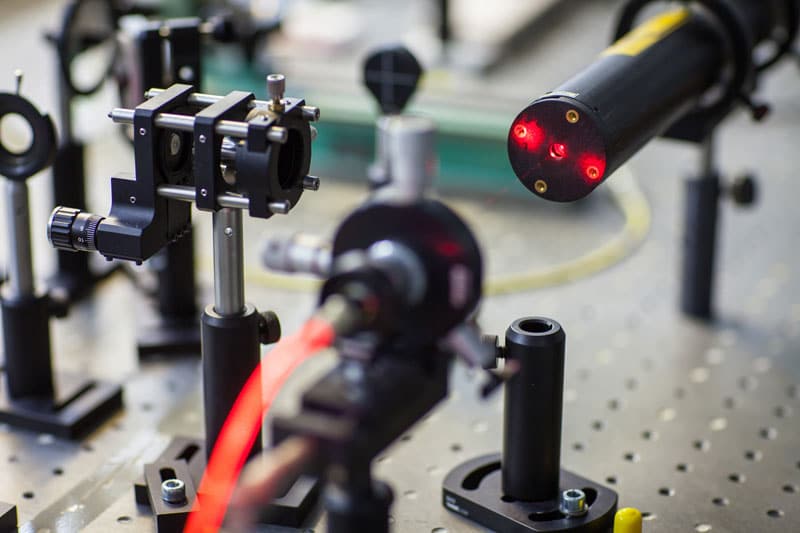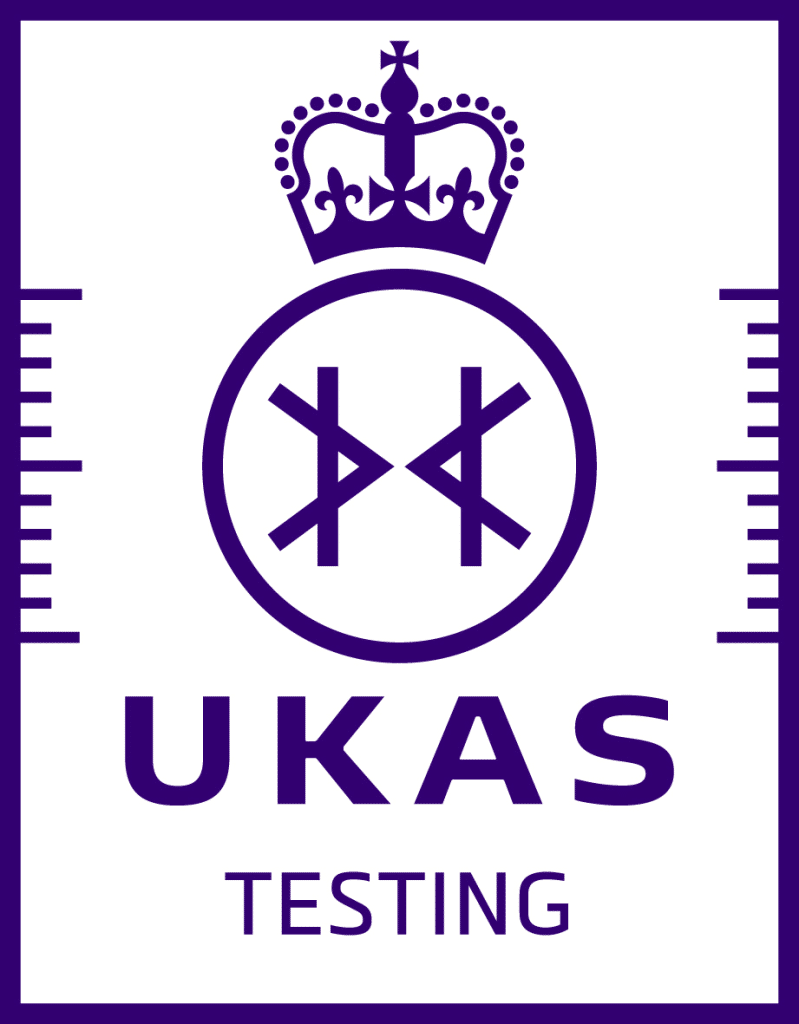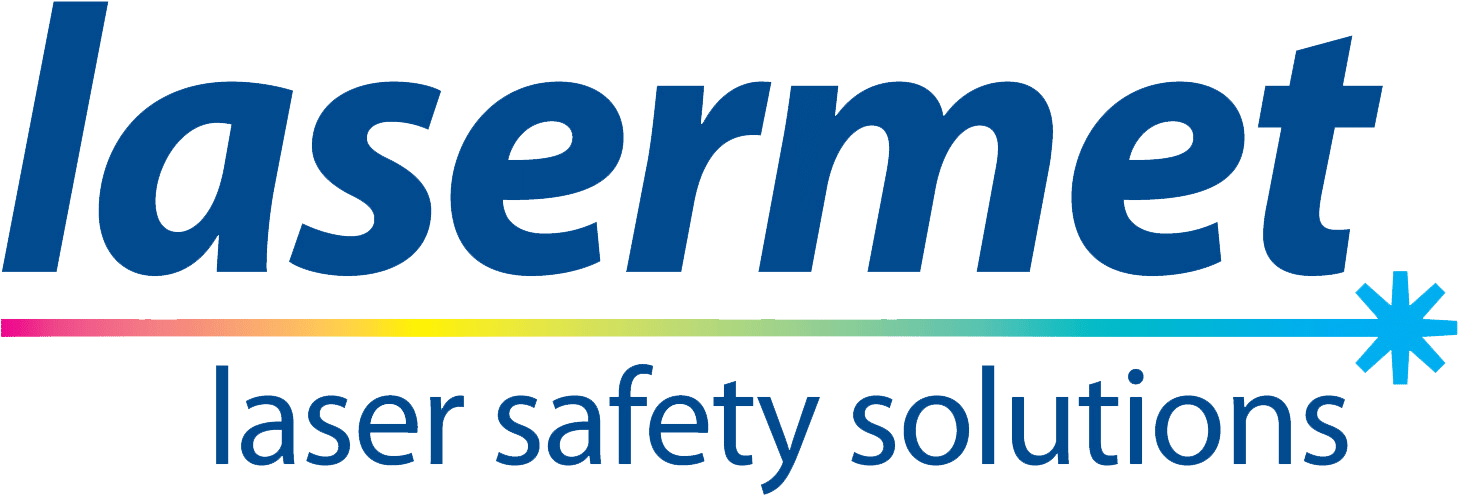
In 2014 the most recent version of the standard came out. This revised how pulse lasers were handled as well as introducing the new Class 1C. In addition the Condition 2 measurement of 70 mm was removed and now the closest distance for measurement is the Naked Eye condition (condition 3) at 100 mm
In Addition IEC 60825-1:2014 gives scope for testing lasers under IEC 62471 if they are used in the same situation as conventional Lamps.
Laser Testing Packages
The full Laser Testing package includes the following services:
Prototype and Finished Product Testing
We will test and certify your prototype or completed product to the appropriate standard or standards and provide a full test report including details of:
- Measurement test results
- Accessible Emission Limits
- Required Engineering Controls
- Required Labelling
- Required information in User Manual and Product Brochures
- Failure modes of drive electronics and other reasonably foreseeable failures affecting safety
Where a product fails to meet the desired classification due to minor failures, we will issue a classification conditional upon making listed changes (such as labelling, user information and minor engineering changes). Where a retest is required this will normally be carried out at a reduced fee.
Consultancy at the Design Stage
Imagine this scenario:
You spend two years developing a laser product. Understandably, your focus is on achieving a high performance product at a price which will sell. Laser safety testing is well down the list of priorities. So only when you are nearing production do you submit your product for laser safety testing – only to find that changes are required in order to meet the desired laser classification. At a late stage even small changes can be costly, and will delay production and sales. Significant design changes can cost a huge amount of time and money.
To avoid this scenario we recommend that you get us involved at an early stage in the design process to advise you on the desirable class of your product and ensure that it is designed to meet the requirements of that class.
CE Marking, Safety Standards, FDA (CDRH) Reports
EUROPE
As part of the process of CE marking, all laser and LED products sold in Europe must be certified to EN 60825-1. The same requirements apply for LED products as for laser products.
Additional standards may apply such as:
- EN 60825-2 for fibre optic laser communication products
- EN 60825-12 for open beam laser communication products
- Low Voltage Directive
- Machinery Directive
- General Product Safety Directive
- Radio & Telecommunication Transmission Equipment Directive
- Medical Devices Directive
Manufacturers can self certify their equipment to EN 60825-1, but the standard is highly complex and difficult to interpret and in many cases an expert is required to obtain the correct laser Class for the product. In any case many manufacturers prefer to have independent verification of their compliance with the classification requirements.
In Europe, product conformity is achieved by requiring manufacturers to certify to the applicable standards for their product. The onus is on the manufacturer to identify the relevant standards, design the product accordingly, and make a declaration of conformity in the user instructions. It is then the responsibility of the various national enforcement bodies to detect non-conformances and intervene where necessary. The standards are set by committees of experts and are under under continual review and enhancement. This system places considerable responsibility and trust in the hands of the manufacturers, but allows standards to be kept up to date with changing technology, knowledge and current practice.
USA
The situation in the USA is somewhat different for laser products. Product safety in the USA is controlled by Federal Regulations which are enforced by the Food & Drug Administration (FDA), and in the case of laser products by a division of the FDA known as the Center for Devices and Radiological Health (CDRH). The Federal Regulations are written into law and manufacturers are legally obliged to comply with them. They are also legally obliged to register the products with the FDA prior to selling or importing them into the country.
The regulation controlling laser products is known as 21 CFR 1040.10. This regulation was written into law in the 1970s and has been unchanged ever since. Consequently it is now very out of date. Nevertheless it still applies and until recently all laser products sold in the USA had to conform to this regulation.
In 2001 the CDRH issued ‘Laser Notice 50’ which states that the FDA will now accept IEC classification and labelling. Now manufacturers selling their products in the USA have the choice of using classification and labelling to IEC 60825-1 or 21 CFR 1040.10. In both cases the products must be registered with the FDA. Note that LED products are not covered by 21 CFR 1040.10 (or any other Federal Regulation) and do not need to be registered.
Although the CDRH laser regulations are Federal Law, registration is a ‘self declare’ process as with EU regulations. However, CDRH do sometimes check submissions and if they do not meet the Federal Regulations may ban use of the offending products or may demand that all equipment in place be changed to meet the regulations. Note also that FDA never ‘approve’ equipment, though on rare occasions they may indicate that they have reviewed the submission and have no further questions regarding the submission.
INTERNATIONAL
IEC 60825-1, IEC 60825-2 and IEC 60825-12 are currently identical to the corresponding EN standards (although the EU standards agencies reserve the right to vary from them if considered necessary for safety reasons). These standards are applicable in Japan, Australia, Canada and pretty much every other country not already covered.
Since IEC 60825-1 is also applicable in Europe (under the EN designation) and the USA (with the exception of some clauses), it is now very much the worldwide laser safety standard.

Single Fault Requirements
EN and IEC 60825-1 and -12 require classification to be carried out at the highest emitted power under reasonably foreseeable single fault failure conditions (EN / IEC 60825-2 uses ‘reasonably foreseeable failure conditions’).
Most notably this affects electronic drive circuits for diode lasers, where a component failure, such as a transistor going short circuit, may drive up the output power of the laser and cause the product to emit above the AEL of the desired class.
In such a case the product must be classified at the higher class unless the electronics is redesigned to eliminate the problem. Many manufacturers overlooked this requirement in the past and succeeded in complying because the diodes were generally low power and would often be destroyed very quickly when subjected to a higher drive current than that intended by the circuit design.
However, with the increase in power and reduction in cost of laser diodes most manufacturers are using higher power diodes operating at a small percentage of their maximum output, to increase reliability. The result is that in the case of a component failure increasing the drive current of the laser diode, many of these devices will run quite happily at twenty times the intended product output. This may not only present a classification problem but, in some cases, a serious safety issue.
If the electronics fail the optical power output may rise considerably and the device may greatly exceed the classification originally allocated under the ‘normal’ conditions of operation. In some situations, the result of the failure may make the system dangerous when in ‘Normal’ operation it would be safe. Particular care must be taken in ensuring single fault control is present and effective in medical applications, especially in eye procedures and in other situations where children and the general public have access to the laser output. For these reasons the IEC/EN standards require that the desired classification Accessible Emission Limit (AEL) shall not be exceeded in ‘Normal’ and ‘Single Fault Conditions’.
Suggested methods of designing laser/systems drive circuits to enable compliance with the single fault requirement include:
- Induced catastrophic failure of the diode in a very short time (approx: 1sec)
- Secondary optical monitoring and independent shutdown
- Optical attenuators
- Current monitoring with independent shutdown
- Modulation watchdogs
- Critical component cross checking (with independent shutdown)
Some of these systems have problems of their own, in particular the current monitoring. Lasers exhibit a fairly large change in lasing threshold with temperature and because the optical output/current drive characteristic is usually steep, fairly precise control of current is required. Independent optical monitoring and shutdown is probably one of the most used methods and is considered the best arrangement as this covers the case very effectively where the power creeps up due to contamination of the monitoring diode or partial failure of a component as well as a catastrophic failure.
This is just an indication of some of the methods which may be employed to comply with the single fault requirement in IEC/EN60825-1. Lasermet will act as consultants if required, providing advice on specific applications, applicability of a given design and particular information concerning the likely problems with each system.
UKAS Accredited Testing
Lasermet is the only Testing House in the UK with UKAS accreditation for LASER and LED Testing
Lasermet is the UK’s leading test house for testing to the following standards:
UKAS Accredited Testing Services
- Laser Testing to BS EN 60825-1: 2014 +A1: 2021
- Laser Testing to IEC 60825-1: 2014
- Laser Testing to EN 50689: 2021 Consumer Laser
- LED and Lamp Testing to BS EN / IEC 62471:2008
- BS EN IEC 60601-2-22: 2020 Medical Lasers

Testing Services
Lasermet also offer testing to the following standards (non-UKAS):
- LED and Lamp Testing to IEC / TR 62471-2: 2009
- BS EN IEC 60825-2: 2004 +A2: 2010 Optical Fibre Communication System
- BS EN IEC 60825-12: 2019 Free Space Optical Communication Systems
- BS EN 60825-1:2014, 2007, 2001 (off-site)
Information Required for Testing Laser Products
TO BS EN 60825-1
- Intended Class of product
- Class of any embedded lasers (if applicable)
- Wavelengths accessible during normal operation
- Approximate powers accessible during normal operation
- Can the laser fire either continuously, or repeatedly while pulsing
- Laser source datasheets
- Interlock datasheets and logic diagram (if applicable)
- One functioning unit, as close as possible to final version
- Brief description of product, its function, and number of laser sources
- Unit set-up / operating instructions
- Circuit diagrams relating to laser power (if below Class 4)
- If these cannot be supplied, then 1 spare laser module
- Details of pulse structure
- Any additional equipment necessary to operate unit
- Copies of all required laser safety labels
- Copy of product user manual
TO BS EN 60601-2-22
- Same requirements as testing for BS EN 60825-1
- Power density and energy density and point of closest access
If some of the information/items requested above is/are not supplied it may take considerable time to analyse the circuit which may result in extra test costs being charged. In some cases it may be impossible to classify the equipment without all the applicable samples/information listed above.
Consequently we strongly advise manufacturers to consider their drive electronics very carefully to ensure that the reasonably foreseeable single fault failure requirement has been covered. Otherwise serious problems are likely to arise at the testing stage, which is usually when manufacturers are under pressure to get the product on sale.
Get in Touch
Fill up a scope of works form today and get a quote from our team. Testing schedules are subject to availability.
